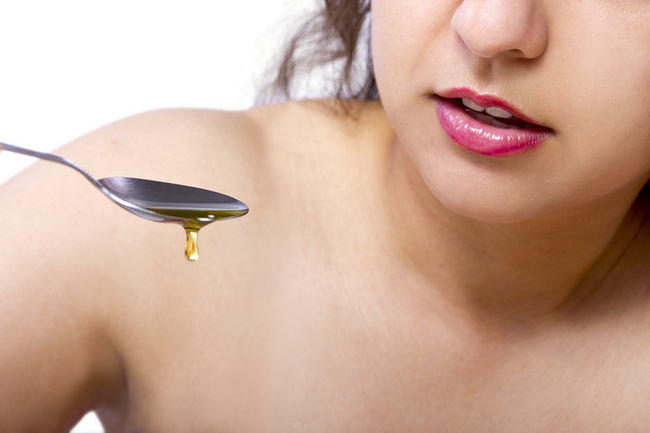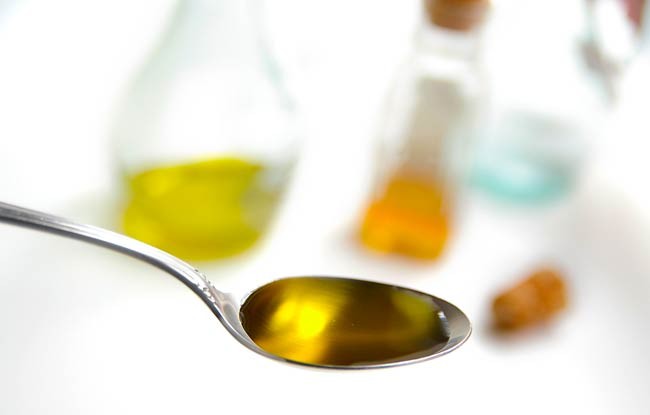- Make It Yourself Lavender Heart-Shaped Bath Bombs!
- 20 Things You Never Knew About “Down There”
- 12 Best Foods For Those Suffering From Arthritis Pain
- 12 Personal Hygiene Mistakes Almost Everyone Makes (Mom Never Told You About #4!)
- 15 Medicinal Plants And Herbs From The Cherokee People
- 12 Mind-Blowing Benefits Of Drinking Coconut Water During Pregnancy
- 12 Outstanding Winter Foods That Won’t Fatten You Up Like A Christmas Turkey
Which is the Best Oil to Use for Oil Pulling?

Photo credit: bigstock.com
Although oil pulling has been around for thousands of years, it seems as if it’s all over mainstream news and internet blogs lately. If you have been practicing this, then you already know how clean and white it makes your teeth, not to mention the detoxifying effects it has on your health. If you don’t know about it, now is the time to check it out. Keep reading to find out what oil pulling is and which is the best oil to use.
What exactly is oil pulling?
Oil pulling sounds like something your mechanic would do to your car, but the truth is, oil pulling is an old remedy that uses oil to clean and whiten teeth, as well as pull toxins from the body, especially the teeth and gums. Find out top 10 benefits of oil pulling.
How do you do it?
It’s very easy. Put about 2 tablespoons of oil in your mouth for about 20 minutes each day and just swish it around, similar to the way you would use mouthwash. Some people like adding two drops of oregano essential oil to help kill even more germs.
In much the same way you use oil to clean your skin, oil inside your mouth cuts through plaque, remove toxins, and kills bacteria without any damage to your gums or teeth. The word “pulling” confuses some people because you aren’t actually pulling oil out of your mouth, but rather, you are pulling toxins and bacteria out of the body with the oil. Oil swishing or oil rinsing might be better terms.
You want to be sure you keep the oil in your mouth long enough for it to absorb the bacteria and plaque, but not so long that your body begins to reabsorb the toxins. 20 minutes is usually sufficient. The oil should be white and thick but creamy when you spit it out. Then rinse with plain water. Then you should do your normal flossing and brushing routine. You only need to this once per day; most people do it first thing in the morning while they are in the shower, getting dressed, etc.
Continue to Page 2

Photo credit: bigstock.com
Why should you do this?
Oil pulling doesn’t take the place of brushing and flossing the same way using mouthwash wouldn’t take the place of brushing. Oils will bind to the plaque on your teeth and hold it in suspension. Using oils with antibacterial compounds will kill bacteria in the mouth. One of the biggest bad guys in your mouth in the way of germs is something called streptococcus mutans. This bacteria has been well studied for the role it plays in gum disease and tooth decay. Doing oil pulling regularly has been shown to reduce the amount of these ugly bacteria in your mouth.
Gingivitis (gum disease) is caused when the plaque on the teeth and gums causes an irritation. Your immune system responds with inflammation in an attempt to attack the bacteria and plaque. Oil pulling will help kill the bacteria and remove the plaque that can lead to gum disease. Most people lose their teeth to gum disease, not cavities, so this is a great way to keep your natural teeth right up to your old age.
Ayurveda medicine states that oil pulling will cure more than 30 diseases but as of today, these are unproven. What has been proven, however, is that oil pulling will help cleanse and heal your mouth and there isn’t anyone on earth who doesn’t want some of that!
SEE ALSO: Everything You Never Knew about Ashwagandah
Again, this won’t replace your toothbrush and floss, but it complements the routine. Remember also to spit out the oil, don’t swallow it! Be sure to spit the oil into a trash can or a tissue. Spitting the oil out into the sink or toilet might clog your plumbing!
Continue to Page 3

Photo credit: bigstock.com
Which is the best oil to use?
Although tradition calls for the use of sunflower oil or sesame seed oil, coconut oil seems to be the logical, and lately, the popular choice.
Coconut oil has natural antibacterial qualities that are very effective at attacking streptococcus mutans bacteria. Coconut oil is also high in lauric acid and contains medium chain triglycerides.
If you aren’t already using coconut oil, this is a good place to start (see all uses of coconut oil). Coconut oil has so many terrific properties that it’s good for almost anything, from cooking to hair conditioning to homemade toothpaste to skin lotion to a coffee creamer replacement.
On top of this, many people report that using coconut oil instead of sesame seed or sunflower oil has been more effective in whitening their teeth and removing plaque.
Although any of these oils will work, coconut oil seems to the favorite one to use, hands down. Coconut oil also tastes better than some of these other oils.
Most studies have involved the traditional sesame seed oil; however, one thing to consider is that this oil has a high concentration of omega-6 fatty acids. You need to have a balance of omega-3 and omega-6 fatty acids for a healthy body and too many of us already have high levels of omega-6, so you really don’t need to add more of those.
If you are skeptical, try it just for a 10 day or two week period. If you don’t see or feel any difference in your mouth, then you don’t have to continue and you haven’t really lost anything. However, chances are you will be hooked and you, too, will be telling everyone how terrific oil pulling is.
Sources:
Video:
































